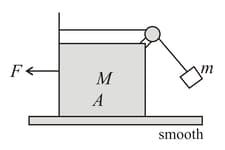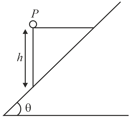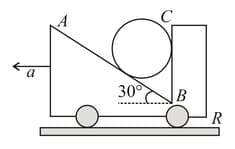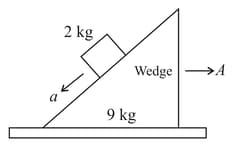BM Sharma Solutions for Chapter: Newton's Laws of Motion I, Exercise 4: DPP
BM Sharma Physics Solutions for Exercise - BM Sharma Solutions for Chapter: Newton's Laws of Motion I, Exercise 4: DPP
Attempt the free practice questions on Chapter 6: Newton's Laws of Motion I, Exercise 4: DPP with hints and solutions to strengthen your understanding. Chapterwise/Topicwise Daily Practice Problems (DPP) Mechanics I JEE Main & Advanced solutions are prepared by Experienced Embibe Experts.
Questions from BM Sharma Solutions for Chapter: Newton's Laws of Motion I, Exercise 4: DPP with Hints & Solutions
A force

A car is moving on a plane inclined at
A wedge of height is released from rest with a light particle placed on it, as shown. The wedge slides down an incline which makes an angle with the horizontal. If the surfaces are smooth, will reach the surface of the incline in time.

A cylinder rests in a supporting carriage, as shown. The side

A ball is suspended on a thread from the ceiling of a car. The brakes are applied and the speed of the car changes from
A block of mas slides down the face of a smooth wedge of mass as shown in figure. The wedge is placed on a frictionless horizontal surface. Determine the acceleration of the wedge.

A body of mass is placed over a smooth inclined plane of inclination placed over a lift which is moving up with an acceleration . The base length of the inclined plane is . Calculate the velocity of the block with respect to the lift at the bottom if it is allowed to slide down from the top of the plane from rest.
In the figure shown, and are free to move, and they are released from rest. All the surfaces are smooth.

